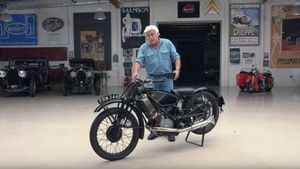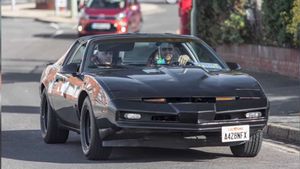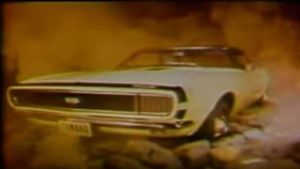
The classic bargain of the Jaguar range, whether V12 or AJ6. Here’s how to avoid the problems and buy one of the all-time great Grand Tourers
Prices
• Project: £300-1200 • Good: £2000-5000 • Concours: £5000-20,000 •
• Most Expensive at Auction: £57,500 (Lister 7.0-litre LeMans)
Practicality ★★★
Running costs ★★
Spares ★★★★
DIY Friendly ★★
Investment ★★★★
Desirability ★★★★
It’s only in the last few years that the XJ-S (or XJS from 1991) has begun to be truly appreciated. Now, values are on the up and spares availability improving all the time.
Power flow from the V12 is smoother than Roger Moore’s script delivery, but the six-cylinder AJ6 version (from 1983) is nearly as civilised and significantly cheaper to run. The most collectible cars are early V12s but build-quality improved significantly after 1982, and the best were built from 1991-on.
Read More
- What’s It Like To Drive The Queen Mother’s Jaguar V12 Sovereign?
- Why We Love The Jaguar XJ X308
- The Dangers Of Nikasil Cylinder Linings In Your Jaguar XK8
For travelling long distance the XJ-S is second to none, offering an elegant blend of well-behaved town-and-motorway conduct alongside the brutal capacity to eat corners and tear up the tarmac. But you must pick an XJ-S wisely or face the prospect of rocking back-and-forth in your garage wishing you had never been born.
Your AutoClassics Jaguar XJ-S inspection checklist
Engine
There were two basic engines under the sculpted bonnet of the XJ-S – the legendary V12 and the AJ6 straight-six. Both are bombproof if serviced and cared for correctly. The V12’s radiator can silt up if coolant isn’t replaced every two years. If the coolant is brown you should walk away. Loose timing chains can cause rattles up front and exhaust gaskets perish around 50,000 miles. Ensure that regular oil changes have taken place.
Little else should cause excessive noise, so walk away if the engine bay offers clanking, misfiring or a smell of burning oil. Viscous fan couplings can seize, which produces a screeching noise, but these are relatively straightforward to replace. The back set of spark plugs on V12s are difficult to get at, and are often left unchanged – check they’ve been done.
The 3.6-litre engine isn’t quite as refined as the V12, but the silky smoothness on offer is still impressive. The only common headache is, like its larger brethren, the exhaust manifold gasket, which dies young.
However, you will need to check that oil pressure is healthy (40-50psi) when the engine is hot. Also look for signs of coolant on the cylinder block. We would recommend a pre-purchase compression test on all cylinders, too.
Whichever engine you prefer, all servicing parts and mechanical components are widely available and specialist help is always to hand.
Gearbox
Both the rarely-found manual and commonplace automatic gearboxes are robust and sturdy. Gearchanges from earlier autoboxes roughen with age, and ill automatics demonstrate a sledgehammer change between first and second.
The Borg-Warner Model 12 – fitted to early V12s – is almost indestructible, but can feel awkward. The smoother Model 400 three-speed General Motors unit (fitted from 1977) and four-speed GM400 (from 1993-on) can often produce a knocking noise from the gearbox mount, a common problem after the spring holding the gearbox in place collapses.
Straight-six models could be purchased with a Getrag five-speed manual or ZF four-speed automatic. Both these options are equally stout.
Should the automatic transmission require some TLC, parts and services are widely available although prices can vary. Manual gearboxes are more of a challenge, as certain components are tricky to source and clutch mechanisms can be costly.
Suspension and brakes
The XJ-S’s top inner bushes of the front twin wishbone suspension set-up wear out roughly every 50,000 miles, depending on road conditions, resulting in uneven tyre wear from incorrect tracking and camber.
The rear suspension is housed within a subframe that also contains the differential. This can make suspension repairs difficult. We recommend supporting the body or putting the XJS on a ramp to inspect the underside and check the subframe mounts for unwanted movement. Check the hub bearings by rocking each wheel from side to side.
Components for your braking system and suspension setup can be purchased from car breakers or from parts suppliers and specialists. Nearly all parts are available new from the likes of Jaguar Classic Parts.
Bodywork
One of the largest failings of the XJS is the bodywork. Check around the headlamps and down the front wings, along with both front and rear wheelarches. Ensure you open the bonnet and inspect the wing mounting flanges. If they show signs of rot then the box sections below may be rotten too.
Check the condition of the rear wheelarches, as they’re indicative of the care and attention the vehicle has received. There should be an obvious seam on show at the lower front edge of the rear wing where it joins the sill. If there isn’t, then you will likely have an ocean of filler on your hands – meaning the area has rusted badly. If there is evidence of a cover sill having been welded over the original, you can expect a crusty reception underneath.
Doors often rust from the inside out due to an ingress of water through the window rubbers. Skins and frames both rot badly. Run your hand slowly along the bottom edges after inspecting the metalwork to check for oxidisation bubbles. Doors also rust around the internal brackets halfway up and on the door top, and windscreen surrounds can rust spectacularly.
Both the front and rear subframes can rot and leave big structural issues – also resulting in financial woes.
Body panels are easily found, although you should prepare to hand over large wads of cash for subframe work should the frame suffer from rot.
Interior
Interiors are generally tough-wearing, though the driver’s seat bolsters show ageing quickly, while wooden inserts on the dashboard and centre consoles can fade, crack and lift. Carpets in the convertible and cabriolets are often water-logged due to hood leaks.
Interior components aren’t hard to find, but working behind the dashboard can be troublesome. Ensure all dials and electrics are working. Electric wing mirror motors burn out, and the mirrors often jam. Check for any signs of misbehaviour when operating the ignition, windows, sunroof, lights, radio speaker system or the on-board trip computer. Sensors for ABS on later models can also develop a life of their own.
Check when air-conditioning was last re-gassed and that it blows cold.
Certain interior trim parts for early XJ-S models are now almost impossible to find. There are still a number of vehicles being broken by specialists for later models, although you will have to fight for certain popular components.
History
- 1975: Presented to the buying public in V12 Coupé form only
- 1983: All-new six-cylinder AJ6 engine made available
- 1983: Cabriolet option lands in showrooms
- 1988: Full-blown convertible launched. Only offered as a V12 automatic
- 1991: Facelifted models arrive. Jaguar removes the hyphen to become ‘XJS’
1996: Production ends to make way for the new XK8.
- Famous Owner: Frank Sinatra
AutoClassics say…
Hunting down an early XJ-S or taking on a project is not for the faint-hearted or those operating on a shoestring budget. We wouldn’t say to avoid anything crafted before 1982, but quality and economy certainly improved on later models.
XJ-S prices have steadily risen as E-type values have spiralled out of control. Low mileage examples with a full service history are gold dust and command a high premium, while the V12 convertibles and special editions – including Le Mans and Celebration models – will attract solid asking prices.
If you don’t like spending most of your time in the petrol station, track down a 3.6-litre. They are far from sluggish and are great for regular use, but still offer solid investment potential for those seeking a more sensible GT cruiser.
An early V12 with manual transmission is the most collectible option, although any well-heeled XJ-S makes for a prime investment.



